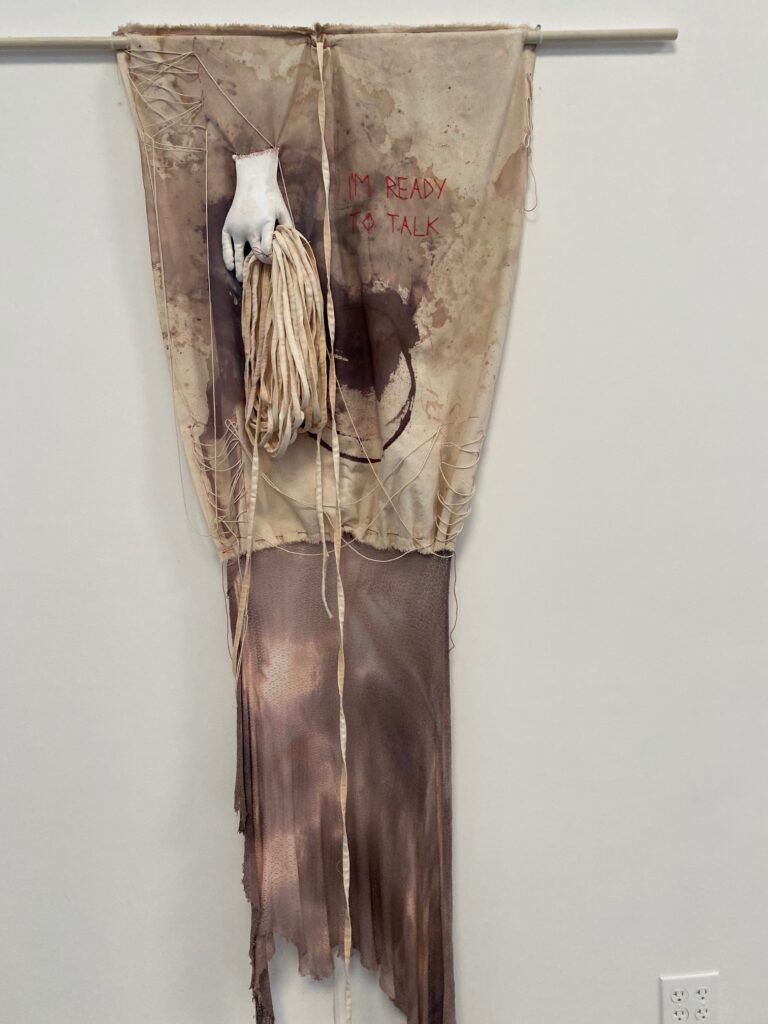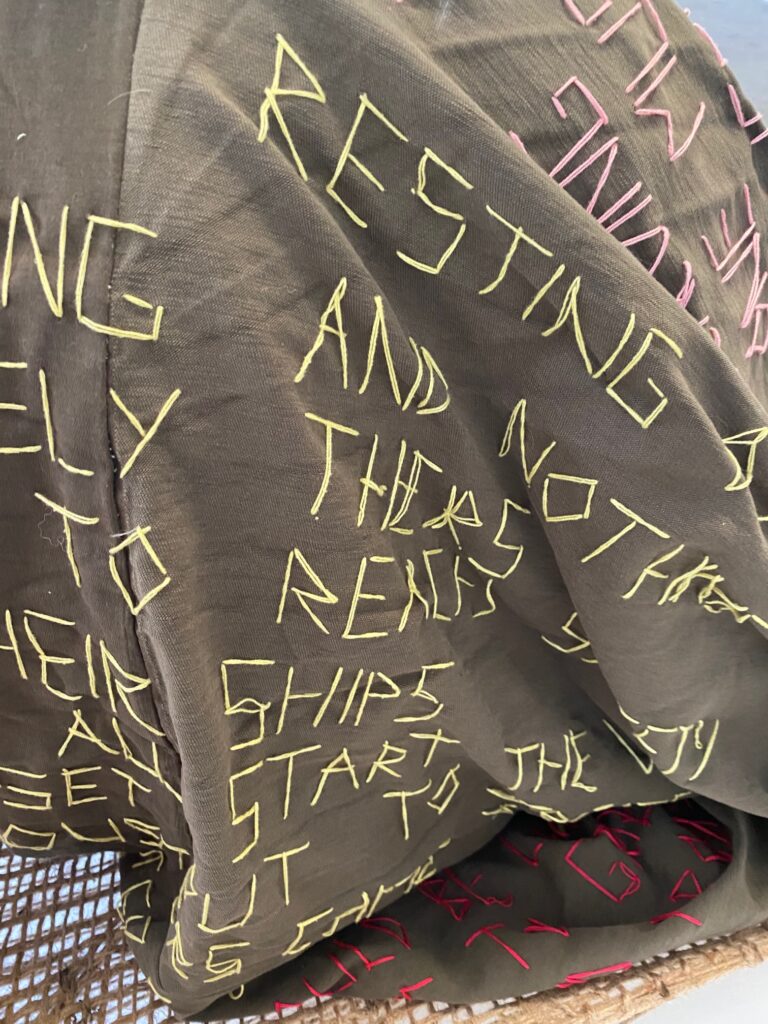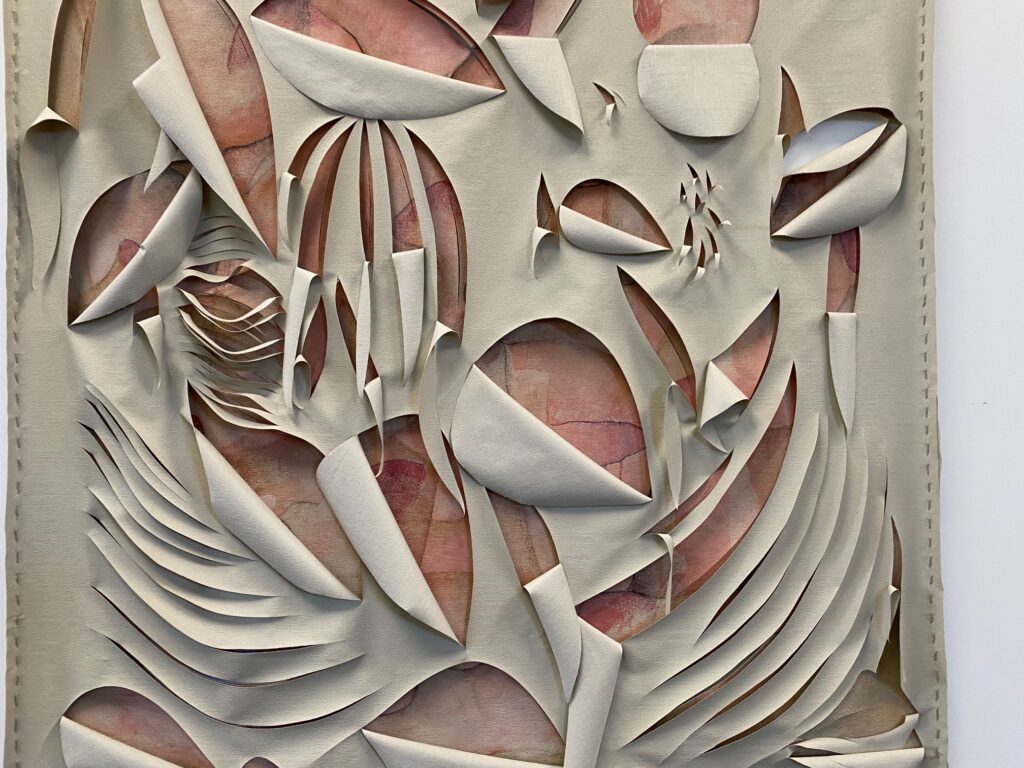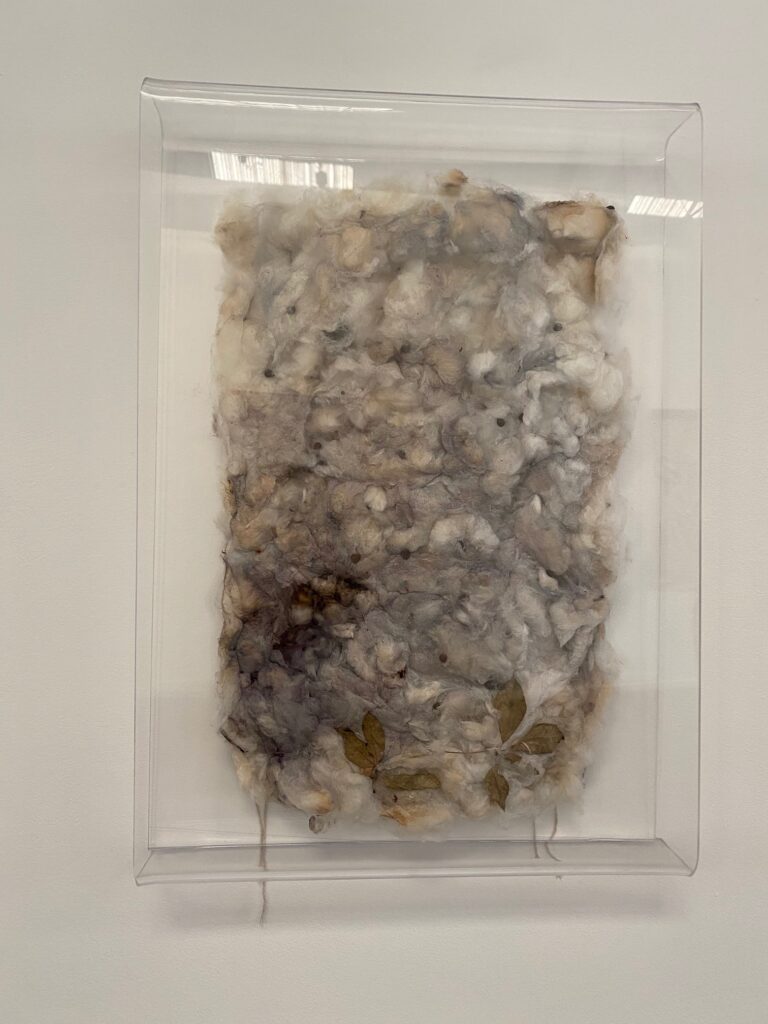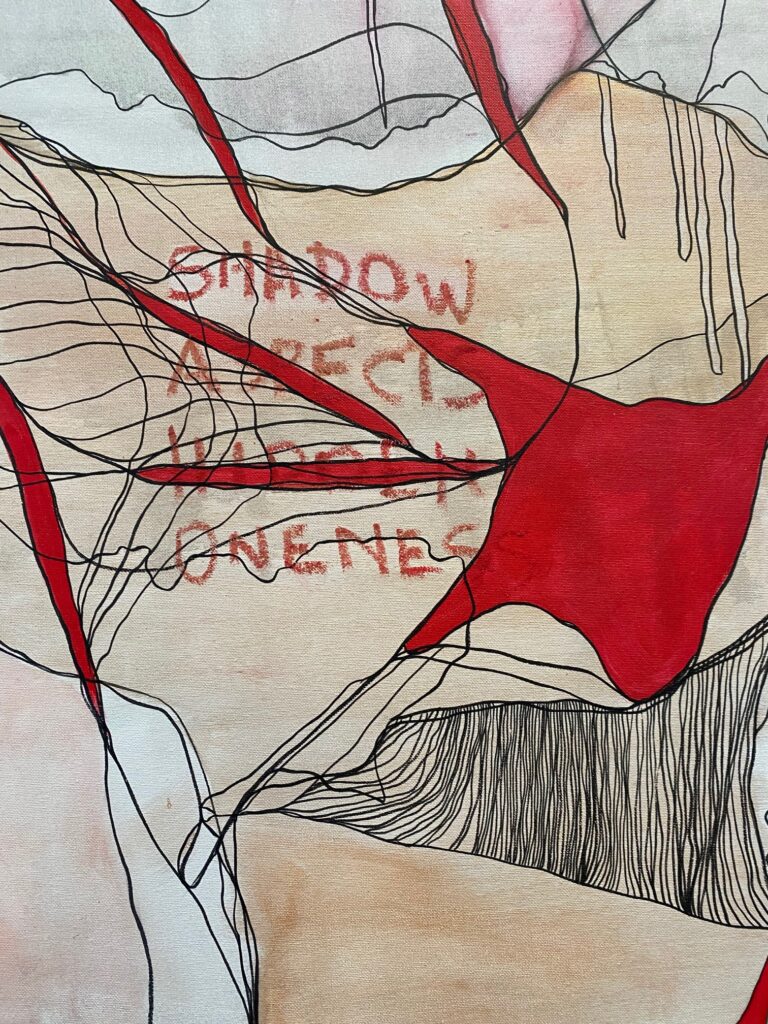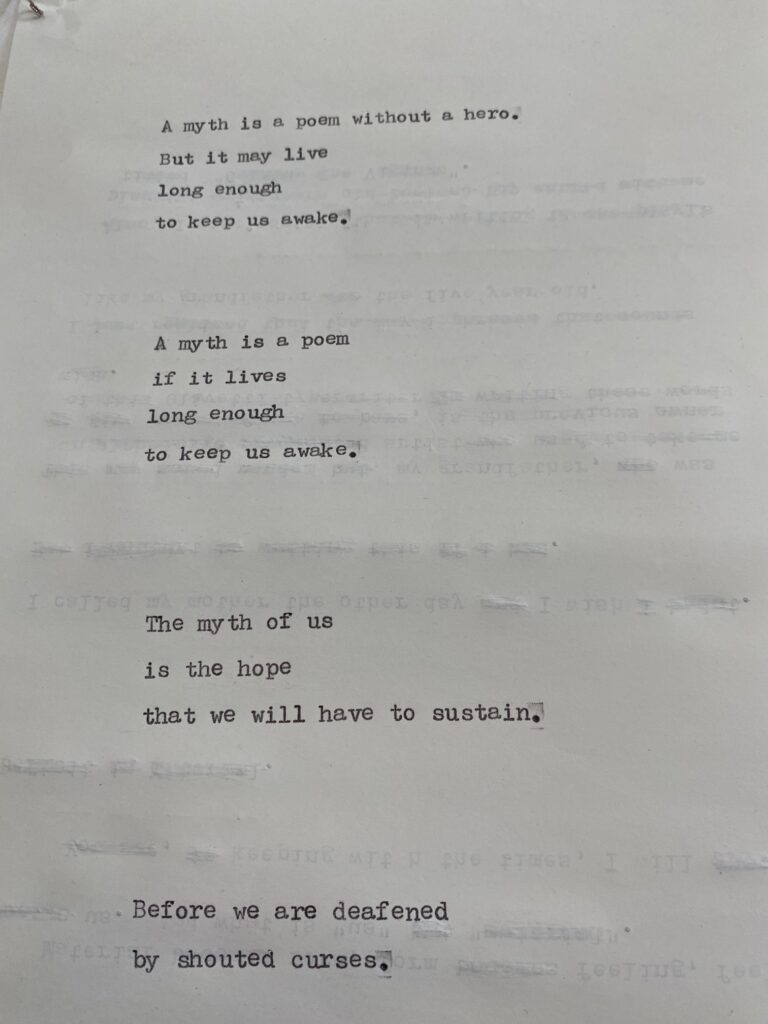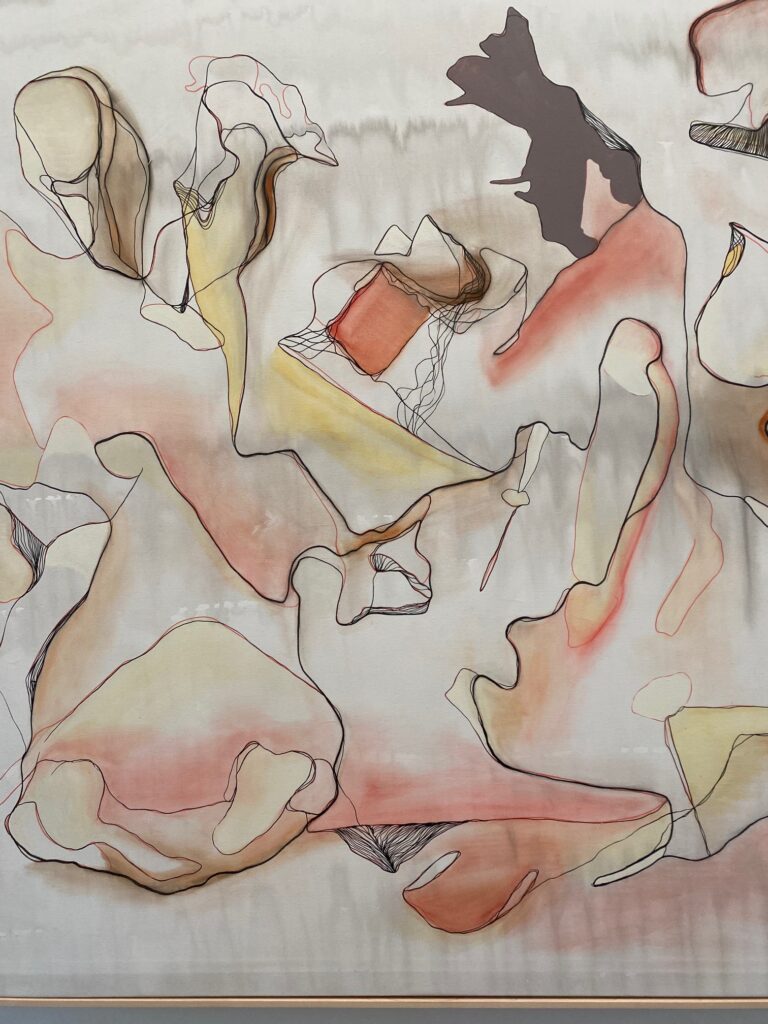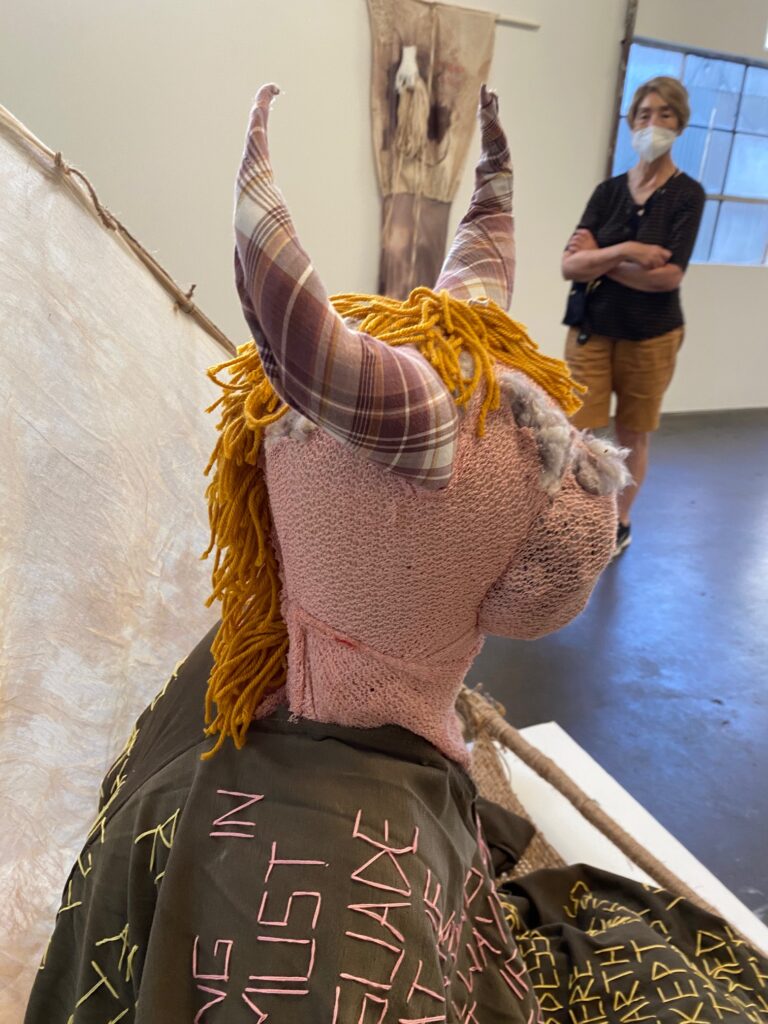Luna Anais Gallery presents a luminous the group exhibition curated by Alicia Piller, Radical Dawn, a series of mixed media works which simply radiate light.
Among the pieces on display are a provocative new look at a city scape as seen from the bumper of a car – as if the headlights had eyes; a floral landscape of fabric with neon igniting behind it; and glowy sculptures and paintings. Artists include Se Young Au, Jessica Taylor Bellamy, Anais Franco, Silvi Naci, Ginger Q, Jaklin Romine, Molly Shea, Sarah Stephana Smith, Linnea Spransy and Kayla Tange.
Reinforcing the Luna Anais mission to exhibit female and nonbinary artists, primarily those local to Southern California, the exhibition focuses on these ten artists meditative and spiritual approaches in many of the pieces on display.
Molly Jo Shea’s “Excited Over Nothing” is an air dancer covered in sequins and beads, hand applied during the pandemic. As the inflated figure rises and dramatically falls, wonderfully depicting the hope and despair of pandemic times, the magic of this work is not just its green and silver shine but its exuberance. Even if the face of dark depression, something glitters.
Silva Naci’s work utilizes natural elements in uniquely distinctive ways. “Untitled (Pussy)” uses an exuberantly bright color palette of vivid blue and lemon yellow in wool and natural dyes using a process that harkens back to the artist’s Albanian ancestors, and their traditional weavers. It pops with color and an almost hypnotic sense of motion.
As to Naci’s mid-fire ceramic, “Tabaka (Ass Up),” the concept of a traditional serving tray is upended by the idea of serving up a woman to suitors in a beautiful beige and brown swirling work that resembles both the sweets served to the suitors to help woo them and the open vulnerability of the women being presented.
Also working in ceramic is Anais Franco. Along with wood elements, the sculptural piece “7 C’s of Resilience” offers a delicate complexity in its poetic and symbolic approach to memory and connection. The almost impossibly detailed, beautiful work is both ritualistic and transcendent.
Sarah Stefana Smith presents a screen, monofilament, bird netting and thread weaving in “Flag to the Aybss No. 3” a surreal flag-like hanging that appears both mystical and futuristic, a kind of magical approach to time warps, black holes, and other undefinable regions of the universe, both external and personal.
More concretely delineated but no less magical are two works by Jessica Taylor Bellamy, her ethereal resin and wire “Palm Veil” suspended over “Ecology IV: Horizons of Manic Striving and Photogenic Decline,” an impressive sculpture of a repurposed BMW bumper, video projected images of city scape, and dried wildflowers. Positioned well in the gallery space with La Brea Ave. as an outdoor backdrop, the bumper appears to have come in off the street, and the viewer to be experiencing what the disembodied vehicle itself may have seen.
Wood, clay, and plexiglass are the “Vessels of Memory. Emotional bodies. Moments of loss transcend. (Haunted Scream Bowls)” created by Kayla Tange. These are delicate, even gloriously poetic sculptures about memory, sentiment, love, and pain. Impossibly fragile looking, reflective in the plexiglass elements, they are as poetic as their title.
Se Young Au takes immersion to a new level with scented elements contained in a glass covered, white porcelain flower, over which are hung poly satin blocks of archival digital prints in her “Inexhaustible Abundance, Form 1.”
To the viewer, there is a sense of elegy and haunting sadness; the artist’s explanation leads one to into a look at not only grief but that within the context of the damages wrought by U.S. imperialist dominance.
Two artists, Jaklin Romine and Ginger Q created “Efflorescence Grip-Con Luz,” the fabric and neon piece that asks us to explore perception in its depiction of hands holding flowers suspended against the curved neon.
And Linnea Spransy’s acrylic on canvas “Patience” (above) looks at remembrance and attainment of “good death” against the context of the modern world in a mysteriously patterned divided image of dark and light that seems to represent both the Heavenward and the Hellbound paths as a kind of intricate puzzle. Spransy’s work in this exhibition is just one of the light-infused standouts.
Collectively, the exhibition is filled with motion and suffused with light, a tribute to grief, loss, change, and a sense of passage. That passage may lead through life, change the course of a life, impose dictates of social mores and rules on life, pull us from our purpose or path, but along the road, however rough, there is the chance at a transition, a journey out of darkness or sorrow or containment into a new day, one in which constraints are lifted, pasts celebrated, and futures more tentatively hopeful.
What we may see in the beams of our own headlights, in the sheen of our own neon is a Radical Dawn, lighting and igniting a new way forward.
With that in mind, Piller’s curatorial first exhibition for Luna Anais is a great place to spend at least a portion of the July 4th weekend, with artists, curator and a wine reception on July 2nd from 2 to 6 p.m.
The exhibition is located in the D2 Art space at 1205 North La Brea Avenue in Inglewood, CA 90302 and is open every Thursday-Saturday from 11:30 a.m. to 7 p.m. through July 10th.
- Genie Davis, photos by Genie Davis



















